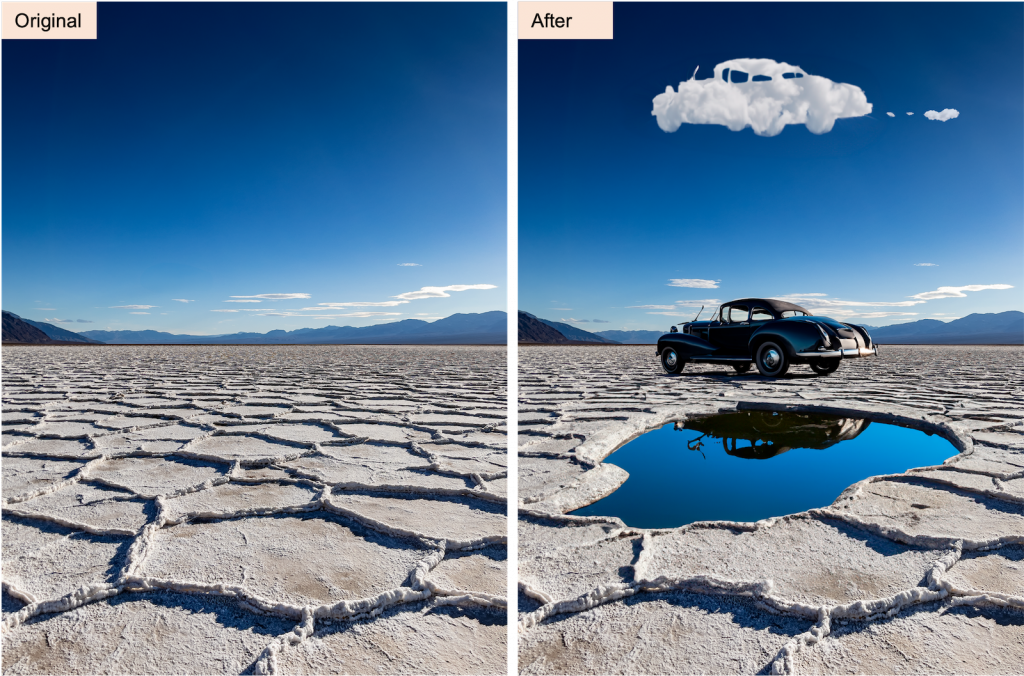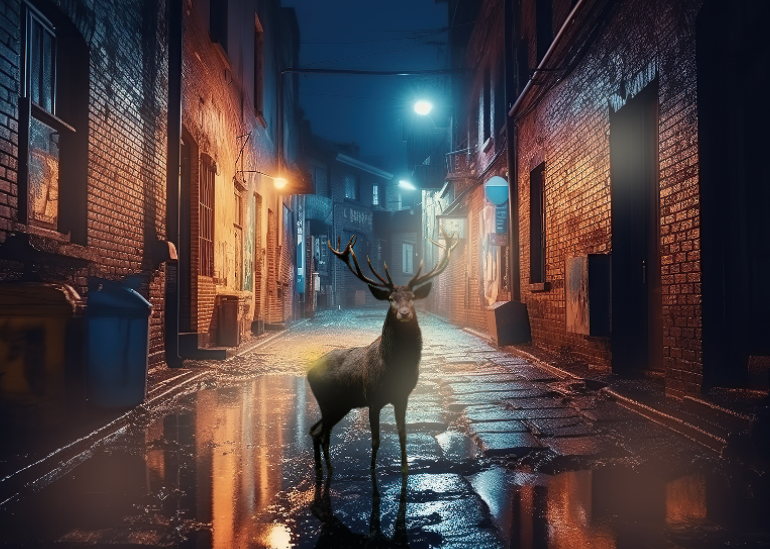Art & Tech
Adobe Has Added New A.I. Capabilities to Photoshop, Allowing Users to Edit Images Using Text Prompts
Just highlight an area of an image and tell the program what you want to see there.

Just highlight an area of an image and tell the program what you want to see there.

Brian Boucher

Artists who use Photoshop have a new tool on their drop-down menus: artificial intelligence. Adobe yesterday introduced the A.I. capabilities of its six-week-old Firefly software into the photo-editing program, allowing users to use text prompts to edit existing images. The software is now in beta release.
A promotional video shows, for example, a cyclist on a country road. By highlighting the center of the pavement and typing “yellow road lines” into a text box, a user can disappear the lane dividers. Want to make the existing image wider? Highlight a box on either side and use “generative fill” to make the landscape more expansive.
Got a photo of a deer in the woods, but prefer for the creature to appear in a setting more like “wet alley at night?” Type the text prompt and click “Generate,” and voilà, there it is. In another case, a dramatic photo of mountains at night becomes more so with the addition of a reflective lake and the Northern Lights.

Happy little reindeer, before edits. Courtesy Adobe.
Adobe points out that the software has been trained on Adobe Stock’s licensed images, so it won’t infringe on intellectual property in filling those text prompts.

Happy little reindeer goes urban, after the A.I. has had its way with it. Courtesy Adobe.
Many artists use Photoshop—whether they admit it or not. Lucas Blaylock revealed how he uses the software in an interview with the show Art21. Others, like Barbara Kasten, rely on the camera and the photographed object alone, no digital intervention. Photoshopped images have even run afoul of Instagram’s fact checkers, and skeptics of digital wizardry have coined the portmanteau “fauxtography.”
But Adobe, in a nod to widespread concern about the trustworthiness of images, is also including “content credentials,” which it compares to “nutrition labels” that will remain attached to an image, enabling proper attribution and letting users know what’s original and what has been altered or generated by A.I. This feature was developed in collaboration with the Content Authenticity Initiative, a group of media and tech companies, academics and others working on an open industry standard.
Photoshop already has “neural filters” that allow users to do things like smooth out a subject’s skin, or add a smile. Programs like After Effects and Acrobat also already offer A.I. features.
The software is now 33 years old, and, as Farhad Manjoo pointed out in the New York Times on its 25th birthday, has “attained the rare status of a product that became a verb—like Google and Xerox.”
More Trending Stories:
A Sculpture Depicting King Tut as a Black Man Is Sparking International Outrage